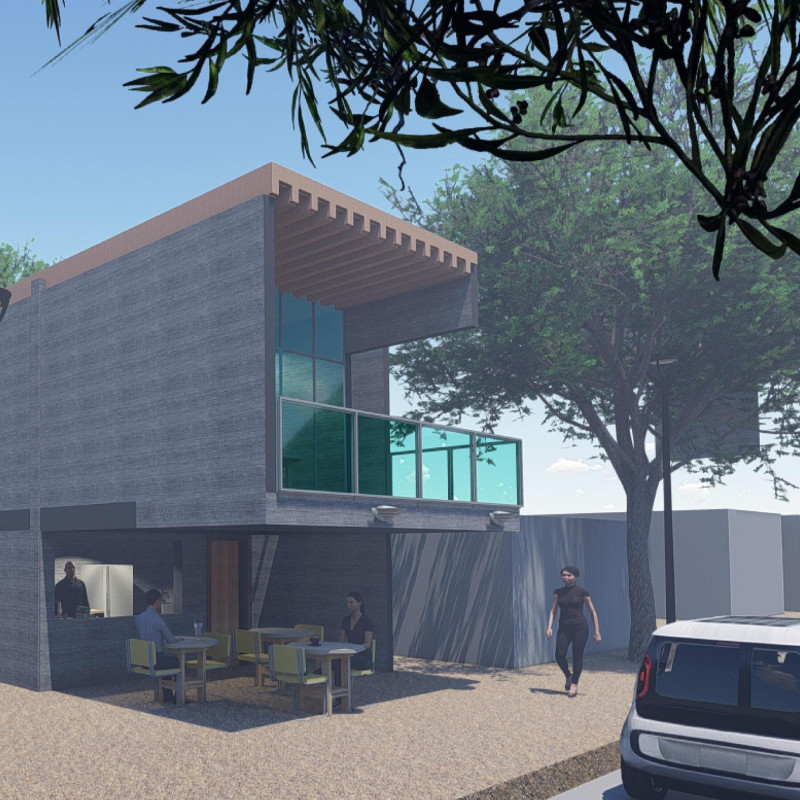5 key facts about this project
Micro Fast is designed to tackle food desert issues in West Virginia. Situated near gas stations and markets, the facility offers a food service space that prioritizes pedestrian access. The design focuses on promoting healthy eating while encouraging community interaction within an urban environment.
Design Integration
The architecture integrates well with nearby landmarks, bringing together food services and everyday commercial elements. This connection creates a familiar environment that improves access to food. The layout clearly separates public and private areas, allowing for engagement among users and providing comfort in personal spaces.
Outdoor Engagement
A key feature is the outdoor space dedicated to interaction and socialization. This area serves not just as a dining option but also as a community gathering spot. It invites residents to connect with one another and share experiences. The outdoor layout supports communal dining and fosters relationships among people in the neighborhood.
Landscaping and Green Space
Green space is incorporated into the design, adding both beauty and function. These small zones provide a place for relaxation and can potentially be transformed into gardens. They enhance the visual aspects of the site and promote a healthier lifestyle for residents. By connecting people with nature, these features strengthen the focus on well-being.
Contextual Response
The design is a direct response to the geographic and economic challenges found in Appalachia. By placing the food service in urban areas, it addresses immediate nutritional needs for the community. The building's style reflects characteristics typical of U.S. residential areas, demonstrating a clear understanding of its context. Attention to detail can be seen in the thoughtful arrangement of spaces, maximizing usability while ensuring an inviting atmosphere for all.





















































